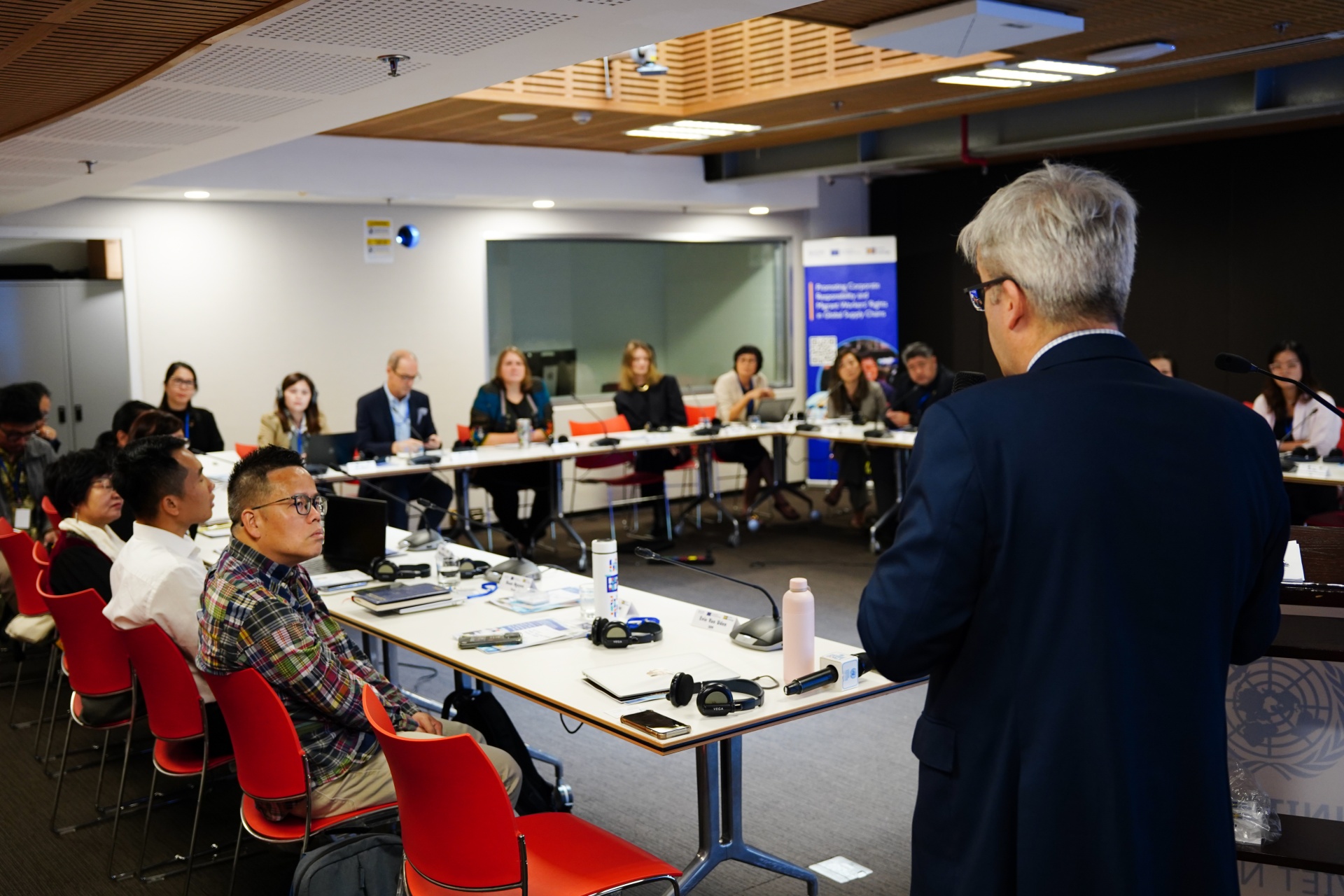Energy Policy Belongs to the States, Not Just Washington – Governing

Report on State-Level Energy Policy and Sustainable Development Goals
Introduction: Cooperative Federalism as a Framework for the SDGs
An analysis of United States energy policy reveals a system of cooperative federalism, where regulatory authority is shared between federal and state governments. This governance structure is pivotal for achieving the Sustainable Development Goals (SDGs), particularly SDG 7 (Affordable and Clean Energy), SDG 13 (Climate Action), and SDG 16 (Peace, Justice, and Strong Institutions). While federal bodies like the Environmental Protection Agency (EPA) establish national standards, states retain significant authority over their energy generation, resource planning, and permitting. This division of power, rooted in legislation such as the Clean Air Act and the Federal Power Act, allows states to tailor energy strategies to local economic and environmental conditions, directly impacting their progress toward the 2030 Agenda.
State-Led Strategies for Achieving SDG 7 (Affordable and Clean Energy)
Several states have leveraged their authority to create energy policies that prioritize the core targets of SDG 7, which call for ensuring universal access to affordable, reliable, and modern energy services. These state-level initiatives demonstrate diverse approaches to balancing energy reliability (Target 7.1) with sustainability and climate objectives.
Case Studies in State Energy Governance
- Utah: The state enacted HB 374, which establishes a clear hierarchy for energy planning. This framework prioritizes reliability and affordability as prerequisites for achieving other goals, including sustainability. This approach directly addresses SDG 7.1 by ensuring that the energy infrastructure is robust and accessible before pursuing broader clean energy transitions. The mandated order of priorities is:
- Adequate
- Reliable
- Dispatchable
- Affordable
- Sustainable
- Secure
- Clean
- North Carolina: The state adjusted its climate policy by eliminating an interim 2030 emissions target while retaining a 2050 carbon neutrality goal. Furthermore, it halted offshore wind development after a cost-effectiveness analysis. These decisions reflect a strategy to pursue long-term climate action (SDG 13) while safeguarding energy affordability (SDG 7.1) for its citizens, ensuring that the transition does not impose undue economic burdens.
- Ohio: Through House Bill 15, Ohio is incentivizing in-state power generation to enhance energy security, streamline regulations, and lower electricity costs. This policy aligns with SDG 7 by focusing on affordability and reliability, and with SDG 8 (Decent Work and Economic Growth) by promoting local industry and reducing operational costs for businesses.
Challenges in Balancing SDG 13 (Climate Action) with Other National Priorities
The implementation of climate policies at the sub-national level highlights potential conflicts between environmental goals and the legal frameworks governing energy production. The case of Colorado illustrates the complexities of navigating federal and state jurisdictions in the pursuit of SDG 13.
Jurisdictional Disputes and Policy Implementation
- Colorado Case Study: The state pursued an aggressive strategy to close coal-fired power plants, citing federal EPA regulations as justification. However, the EPA partially rejected Colorado’s Regional Haze Plan, clarifying that the Clean Air Act does not grant states the authority to mandate the closure of a power plant against the owner’s will.
- Implications for SDG 16: This conflict underscores the importance of strong and clear institutions, a key component of SDG 16. It demonstrates that effective climate action requires adherence to established legal and federalist principles. The EPA’s decision reaffirmed that while states develop implementation plans, they cannot overstep federal law, thereby maintaining a balance of power that prevents potential economic disruption in the name of environmental policy.
Conclusion: The Role of Sub-National Governments in Advancing Sustainable Development
The principle of cooperative federalism positions states as critical actors in achieving the Sustainable Development Goals. State-led energy policies in Utah, North Carolina, and Ohio show a commitment to ensuring energy is affordable and reliable (SDG 7) while pursuing long-term sustainability. Conversely, jurisdictional challenges, as seen in Colorado, highlight the need for policies that are consistent with established governance frameworks (SDG 16). Ultimately, empowering states to manage their energy futures allows for tailored solutions that balance environmental objectives with economic realities, making state leadership and voter accountability essential for advancing the global 2030 Agenda.
Analysis of Sustainable Development Goals in the Article
1. Which SDGs are addressed or connected to the issues highlighted in the article?
- SDG 7: Affordable and Clean Energy – The article’s primary focus is on energy policy, discussing affordability, reliability, and the mix of power generation sources.
- SDG 13: Climate Action – The text addresses environmental regulations, emissions targets, carbon neutrality goals, and the Clean Air Act, all of which are central to climate action.
- SDG 16: Peace, Justice and Strong Institutions – The core theme of “cooperative federalism” and the debate over the roles of state versus federal government in policy-making directly relate to the effectiveness, accountability, and responsiveness of institutions.
2. What specific targets under those SDGs can be identified based on the article’s content?
-
SDG 7: Affordable and Clean Energy
- Target 7.1: Ensure universal access to affordable, reliable and modern energy services.
Explanation: The article consistently highlights the importance of states ensuring energy is affordable and reliable. It praises Utah’s policy for prioritizing “adequate, reliable, dispatchable, affordable” energy and Ohio’s for aiming to “lower electricity costs.” The phrase “keeping the lights on” is used to emphasize the goal of reliable energy for all citizens. - Target 7.2: Increase substantially the share of renewable energy in the global energy mix.
Explanation: The article discusses state-level decisions that directly impact the energy mix. North Carolina’s decision to table “offshore wind development” and Colorado’s push for “coal plant closures” are examples of policies that determine the share of different energy sources, including renewables, within a state’s portfolio.
- Target 7.1: Ensure universal access to affordable, reliable and modern energy services.
-
SDG 13: Climate Action
- Target 13.2: Integrate climate change measures into national policies, strategies and planning.
Explanation: The article details how states are creating their own environmental strategies. North Carolina’s adjustment of its climate goals—eliminating a “2030 emissions target” while retaining a “carbon neutrality goal for 2050″—is a direct example of integrating climate measures into state planning. Similarly, Colorado’s “Regional Haze Plan” is a state-level strategy to comply with federal environmental law.
- Target 13.2: Integrate climate change measures into national policies, strategies and planning.
-
SDG 16: Peace, Justice and Strong Institutions
- Target 16.6: Develop effective, accountable and transparent institutions at all levels.
Explanation: The entire article is a commentary on institutional effectiveness, arguing for a “cooperative federalism” model. It promotes state-level accountability by stating that voters can “reward good decisions and punish bad ones at the ballot box,” which is a fundamental mechanism for holding governing institutions accountable. - Target 16.7: Ensure responsive, inclusive, participatory and representative decision-making at all levels.
Explanation: The article advocates for state-level authority because states are “best positioned to balance environmental goals with the practical realities of keeping the lights on,” suggesting this approach is more responsive to local needs than “one-size-fits-all mandates” from the federal government.
- Target 16.6: Develop effective, accountable and transparent institutions at all levels.
3. Are there any indicators mentioned or implied in the article that can be used to measure progress towards the identified targets?
-
For Target 7.1 (Affordable and Reliable Energy)
- Indicator: Electricity Costs for Consumers.
Explanation: The article explicitly mentions that a goal of Ohio’s House Bill 15 is to “lower electricity costs,” making this a direct, measurable indicator of affordability. - Indicator: Energy Reliability.
Explanation: Utah’s policy prioritizes “adequate, reliable, dispatchable” energy. This implies that metrics related to reliability, such as the frequency and duration of power outages, are key indicators for measuring the success of state policies aimed at “keeping the lights on.”
- Indicator: Electricity Costs for Consumers.
-
For Target 7.2 (Share of Renewable Energy)
- Indicator: Share of Energy Sources in the Generation Mix.
Explanation: Decisions like North Carolina tabling “offshore wind development” or Colorado forcing “coal plant closures” directly relate to the composition of the energy portfolio. The percentage of power generated from various sources (wind, coal, etc.) is the implied indicator for tracking changes in the energy mix.
- Indicator: Share of Energy Sources in the Generation Mix.
-
For Target 13.2 (Integrate Climate Measures)
- Indicator: Greenhouse Gas Emissions Targets.
Explanation: The article directly references North Carolina’s “2030 emissions target” and its “carbon neutrality goal for 2050.” These specific, time-bound goals are quantitative indicators used to measure progress on climate action. - Indicator: State Implementation Plans (SIPs).
Explanation: The article mentions that under the Clean Air Act, states develop “State Implementation Plans.” The existence, content, and approval status of these plans serve as indicators of how states are formally integrating environmental and climate measures into their regulatory frameworks.
- Indicator: Greenhouse Gas Emissions Targets.
4. Summary Table of SDGs, Targets, and Indicators
| SDGs | Targets | Indicators |
|---|---|---|
| SDG 7: Affordable and Clean Energy | 7.1: Ensure universal access to affordable, reliable and modern energy services. |
|
| 7.2: Increase substantially the share of renewable energy in the global energy mix. |
|
|
| SDG 13: Climate Action | 13.2: Integrate climate change measures into national policies, strategies and planning. |
|
| SDG 16: Peace, Justice and Strong Institutions | 16.6: Develop effective, accountable and transparent institutions at all levels. |
|
| 16.7: Ensure responsive, inclusive, participatory and representative decision-making at all levels. |
|
Source: governing.com

What is Your Reaction?
 Like
0
Like
0
 Dislike
0
Dislike
0
 Love
0
Love
0
 Funny
0
Funny
0
 Angry
0
Angry
0
 Sad
0
Sad
0
 Wow
0
Wow
0














































.jpg.webp?itok=0ZsAnae9#)







:focal(1500,1000)/https://media.globalcitizen.org/a6/9a/a69a4720-d8a1-4715-b596-18738d03c05c/rotary_polio_hero_image.jpg?#)

/countries/sri-lanka/photo-credit---dmc-sri-lanka.tmb-1200v.jpg?sfvrsn=dc298bcc_1#)



















